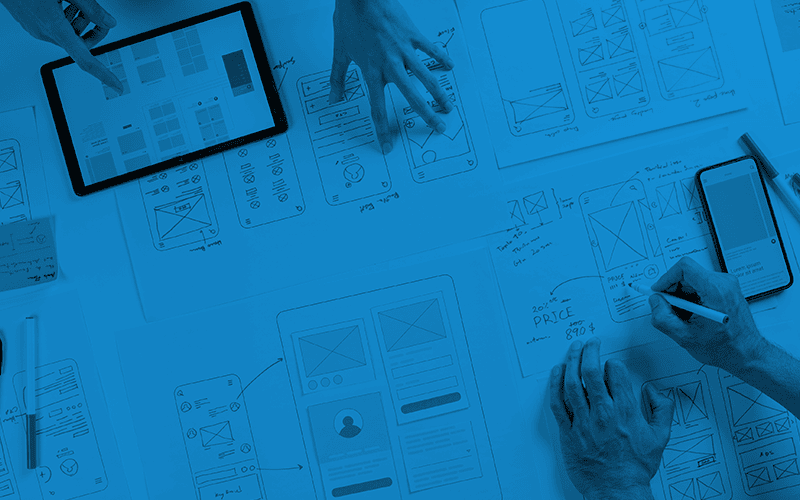
Why Paperless Is the Future of Production Floor Scheduling
For manufacturers hoping to take advantage of IIoT and Industry 4.0, paperless is loosing viability.
Manufacturing is going through an upgrade. As the Industrial Internet of Things (IIoT) becomes more standard in production shops across the country, manufacturers are facing an unavoidable choice: transition to a paperless process now, or wait until all the competition does it first?
Despite the inevitability of this change, manufacturers actually have a lot to look forward to with this transition. While the shift may take some getting used to, the advantages of paperless processes are clear. Not only can digital do everything paper can do (only better), it also opens the door to new possibilities: greater insight into the production flow, reduced waste, and seamless communication between management and the factory floor.
At JobPack®, we specialize in manufacturing software that helps production shops schedule their workflows, gain insights into machine use, and maintain digital records of their work. Here are the top ways we’ve seen paperless manufacturing benefit our customers.
Remove clutter from an already dirty environment.
While some manufacturing environments have grown cleaner in recent decades, many production processes are not. A workspace where machining, welding, or lathing is taking place is already messy enough without piles of paper documentation taking up space.
On the other end of the spectrum, some working environments, such as cleanrooms, may not allow paper products precisely because they contribute to particle generation. Long story short, if you’re trying to reduce the mess around your work station, getting rid of paper is a good first step.
Keep all production information in one place.
Traditional production packets include multiple pieces of information for the operators on the shop floor including technical drawings, instructions, and other details. For processes that require multiple steps, these packets can quickly become unwieldy. Digital production packets keep all that information in one easily accessible place.
Reduce physical file storage needs.
Consider the reams of paper you go through as a traditional manufacturer. What do you do with all those paper packets once they’ve been used? For many production shops, the answer is that their documentation is kept in physical folders which must themselves be stored, maintained, and protected from damage.
Cloud-based digital records don’t require these physical space needs, and they can be backed up to protect against data loss more easily than paper documentation.
Maintain up-to-date records of part changes.
Production parts are constantly being updated and revised. This means that many paper documents are already out of date by the time they reach the factory floor. Digital documentation ensures production data stays accurate while also maintaining a record of changes for future reference.
Meet regulatory demands with minimal fuss.
As quality control standards become ever more rigorous, so too are the demands for documentation of end-to-end processes. In some cases, maintaining these records is required for compliance reasons, so that a business can be audit-ready whenever called upon. Digital documentation can also be stored more securely than paper, which can be a regulatory concern in its own right.
Enable greater customization for small production runs.
Industry 4.0 processes are making it easier for consumers to request customized products. These small batch products require more flexibility on the part of manufacturers—something which paper doesn’t allow for. By going digital, manufacturers are better able to handle custom requests.
Cut down on waste.
Paper isn’t cheap, especially in the quantities manufacturers require on a daily basis (not to mention toner, file folders, pens, paper clips, staples, and the cost of printers themselves). The switch to digital can eliminate an entire line item from the operational budget, and while managers, schedulers, and operators will obviously need digital devices, the price of a tablet or netbook is cheap enough to make them a cost-effective replacement.
Paper waste isn’t the only budget saver, however. Paper documentation is more error-prone than digital. It’s far too easy for a paper packet to have the wrong version of a design in it, or for pages to go missing, or for inaccurate information to be copied over and then not updated promptly enough. These can lead to manufacturing flaws, which are far more costly than mere paper.
Eliminate redundant digitization tasks.
We’ve talked about physical waste, but let’s not overlook the waste that takes place when workers have to digitize paper documents. By going digital first, manufacturers can reduce busy work, ensuring their employees are able to spend more of their time on productive tasks. And, of course, digital first also means there’s no chance for duplication errors to enter the system while employees are entering data from paper documents.
Keep all departments in the loop.
Last but not least, digital documentation improves communication between departments. Not only does cloud storage make production processes more accessible, going digital can also lead to better data collection and real-time production updates. This connectivity helps keep everyone on the same page—even if it is a digital one.
JobPack®’s AIR module enables paperless data sharing on any device with a browser.
Interested in a paperless manufacturing environment but don’t know where to begin? JobPack®’s AIR module provides a lightweight transition point with minimal disruption to your processes. The web-based platform allows you to start small and scale up as needed, placing scheduling data and work queues, planning information, and machine analytics right at your fingertips. Contact us today to learn more about how our software can make paper a thing of the past on your manufacturing floor.


